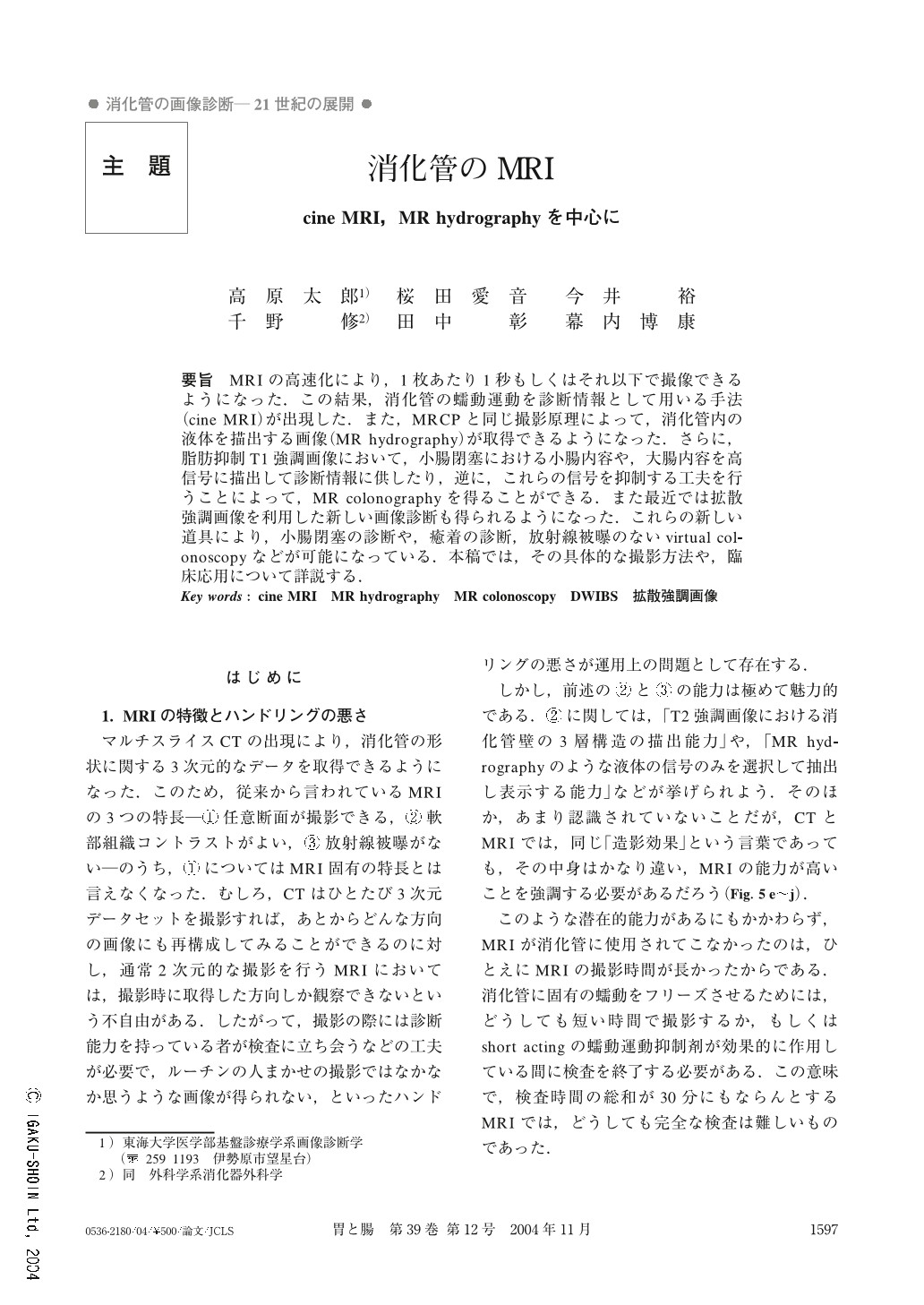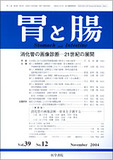Japanese
English
- 有料閲覧
- Abstract 文献概要
- 1ページ目 Look Inside
- 参考文献 Reference
要旨 MRIの高速化により,1枚あたり1秒もしくはそれ以下で撮像できるようになった.この結果,消化管の蠕動運動を診断情報として用いる手法(cine MRI)が出現した.また,MRCPと同じ撮影原理によって,消化管内の液体を描出する画像(MR hydrography)が取得できるようになった.さらに,脂肪抑制T1強調画像において,小腸閉塞における小腸内容や,大腸内容を高信号に描出して診断情報に供したり,逆に,これらの信号を抑制する工夫を行うことによって,MR colonographyを得ることができる.また最近では拡散強調画像を利用した新しい画像診断も得られるようになった.これらの新しい道具により,小腸閉塞の診断や,癒着の診断,放射線被曝のないvirtual colonoscopyなどが可能になっている.本稿では,その具体的な撮影方法や,臨床応用について詳説する.
High-speed MRI, with a scan speed of 1 second per scan, allows the development of cine MRI, which provides diagnostic methods for examination of peristalsis in the digestive tract. It also enables rendering MR hydrograms, which can be used to visualize fluid in the gastrointestinal tract using the same scanning principle as MRCP. In addition, MR colonography provides images of the contents in the obstructed intestine or in the colon by increased or decreased signals, using fat-suppressed T1 weighted MRI. Recently, a new technique for diagnostic imaging using diffusion-weighted MRI was introduced. To diagnose obstruction or adhesion in the small intestine, virtual colonoscopy avoiding radiation exposure can be achieved using these new techniques. Here, we present practical methods using these new techniques and describe their clinical application.
1) Department of Radiology, Tokai University School of Medicine, Isehara, Japan
2) Department of Surgery, Tokai University School of Medicine, Isehara, Japan

Copyright © 2004, Igaku-Shoin Ltd. All rights reserved.


